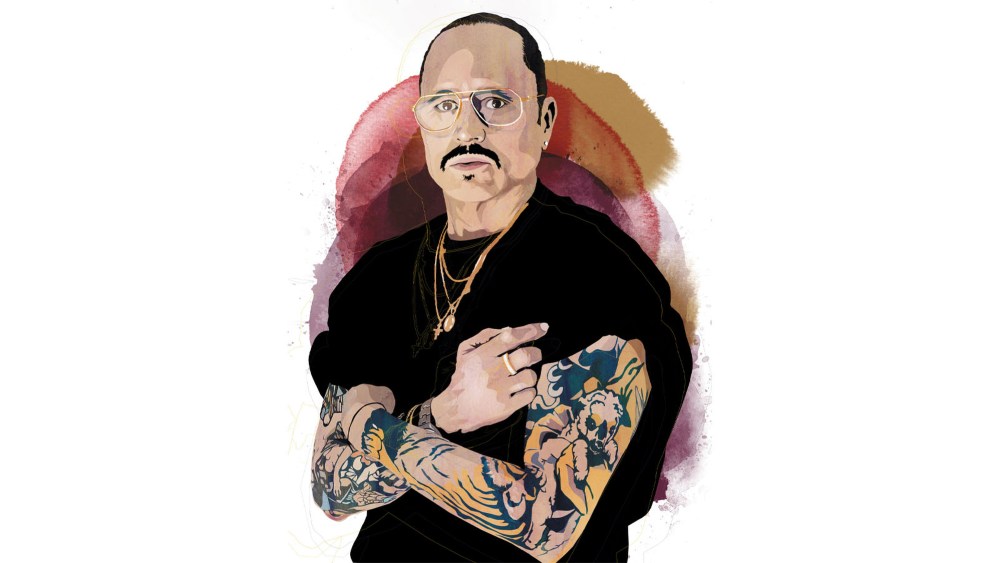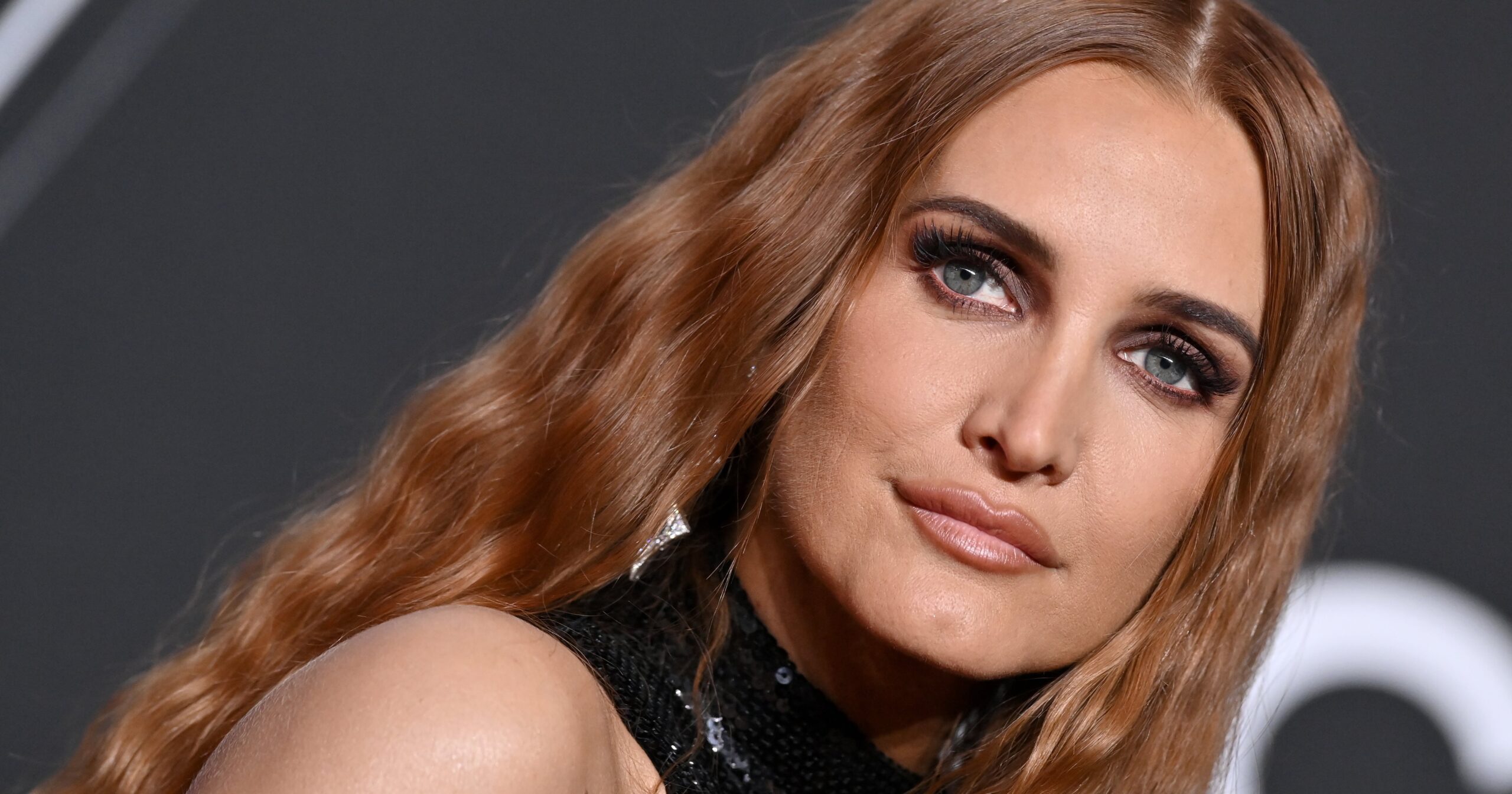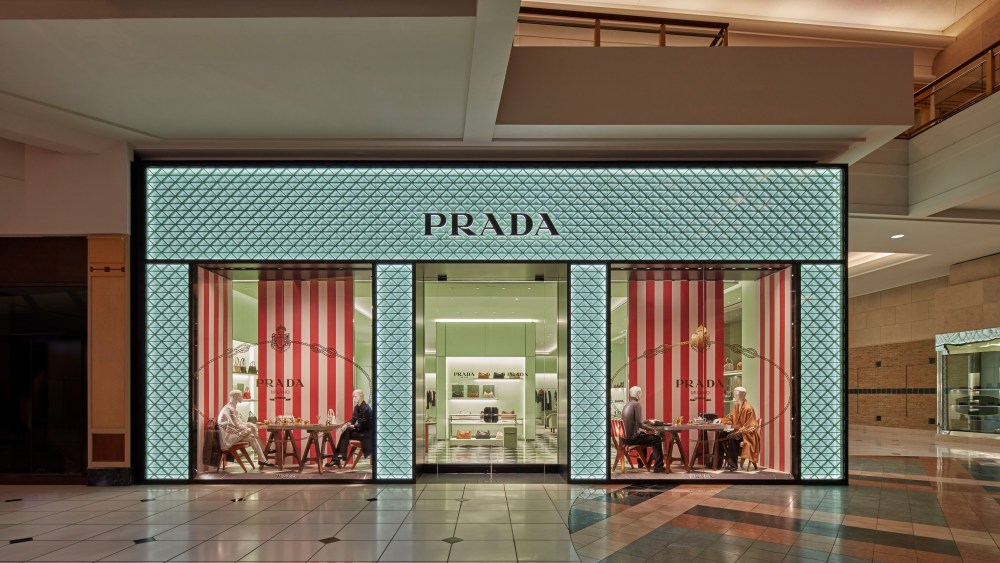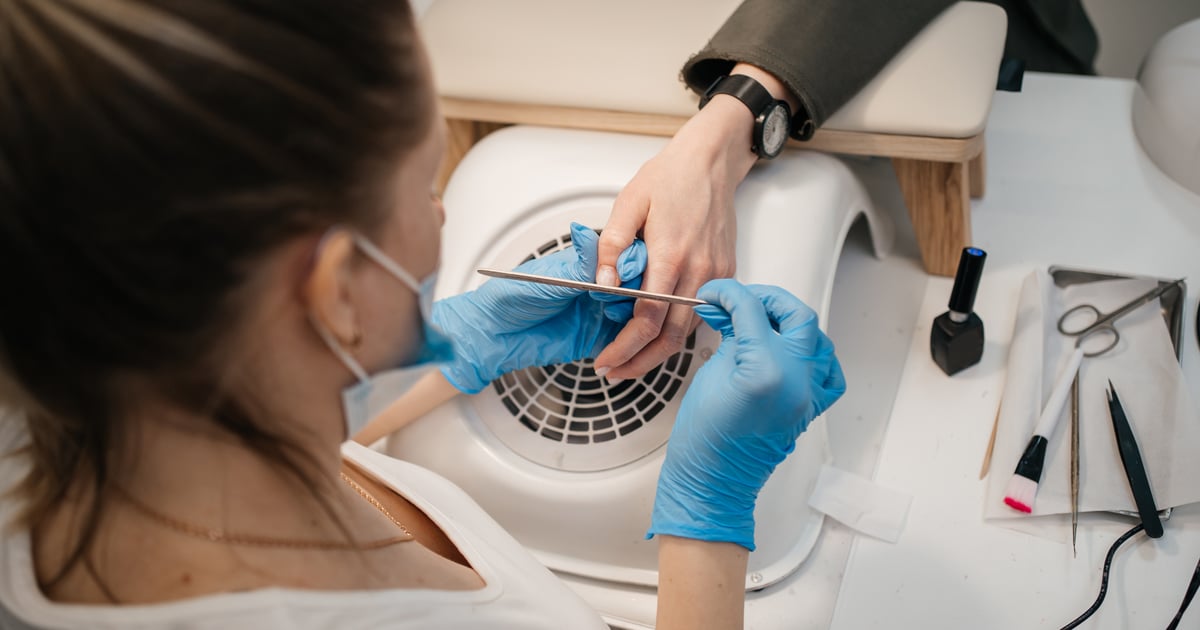Willy Chavarria is an overnight success — it just took more than 30 years.
The Mexican-American designer, now 58, got his start in his early 20s interning for Nick Graham at Joe Boxer. He moved on to Ralph Lauren and over the years has also worked at American Eagle Outfitters, Yeezy, Dickies Construct, Calvin Klein and other well-known brands.
Through those years, he always had the dream of starting his own label, one he fulfilled in 2015 when he launched the Willy Chavarria brand. But it wasn’t until two years ago that his menswear collections that blend Chicano culture, political expression and social commentary truly broke through.
In 2023 and 2024, he was named Menswear Designer of the Year by the Council of Fashion Designers of America and he was also selected as Designer of the Year at the Latin American Fashion Awards and became the Artist Ambassador of the ACLU. These breakthrough moments led the Fédération de la Haute Couture et de la Mode, the organizing body of Paris Fashion Week, to invite him to show there, which he’s done for two seasons.
You May Also Like
Showing amid major French luxury brands with mega marketing budgets, sets and huge staffs, Chavarria’s runway shows nonetheless became the buzz of Paris for their authenticity, social commentary — and unique designs for men and women.

And earlier this month, Chavarria secured a minority investment from Chalhoub Group, the Middle East’s preeminent luxury retailer that operates more than 950 stores across the region. Chalhoub joins FAE Fashion Ventures, a brand-building firm founded by music industry veteran Sarah Stennett and David Grinberg, which invested in Chavarria in spring 2024.
In light of this momentum, Chavarria is the recipient of this year’s WWD Honor for Menswear Designer of the Year.
But while Chavarria is finally experiencing the success he’s worked so hard to achieve, he’s still the same person who grew up in the segregated small city of Huron in California’s San Joaquin Valley to a Mexican father and an Irish mother. The impact of their interracial marriage and his identity as an openly gay man still define much of his work.
Ever since he was a child, Chavarria said he was “always really interested in the way people dressed. I was obsessed about how we present ourselves. Even as a child, I would draw people wearing clothes.”
He said when he was very young, he asked his mother to buy him a book at the dollar store and he would fill it with sketches of dresses.
“I always had this fixation on fashion,” he said.
But while his dream was always to have his own label, he also had to eat, so he found himself working for other companies to make ends meet and learn the ins and outs of the fashion industry.

“For as long as I can remember, I’ve had the instinct to run my own show,” he said. “But as I got older and found myself in fashion as a career, I kind of lost sight of having my own thing because I was working so hard and learning so much.”
During those years, he also saw another side of fashion, one unrelated to the glitz and glamor.
“There was a part of the industry that I didn’t really like,” he said. “There was something kind of impersonal, and it didn’t really do enough to fill my cup. So that’s when I started to realize that I am going to do my own thing, and I am going to do it in a way that I think is right — and that’s different from the way I see so many other companies functioning.”
His mission is to use the “art of fashion, the voice of fashion and the platform of fashion to have a narrative that is empowering to people at its base. I don’t yet have a mission statement for the brand, but the core idea is to use business as a way to make people feel included, to make people feel seen, to recognize the issues that we face in the world and to find ways to hit them head on.”
He said that mentality is ingrained within the business and impacts the people hired, the way they’re treated and the entire strategy of the company. “I’m very happy this kind of platform has worked, and we have been able to build a business. Of course, we’re still growing and nowhere near the level of success that we are going to be, but, thanks to God, we’re on the right track.”
But it took a decade of “blood, sweat and tears,” he said. “It’s a grueling job. Anytime I talk to young kids that want to go into fashion and want to have their own brand, I tell them: make sure you have the bones for it, because you have to love it so much that you’re willing to sacrifice everything for it.”
Chavarria believes he’s lucky that he’s been able to “build a family with my husband and with the close people I have around me who understand that what I’m doing is my greatest passion.”
In fact, he credits his husband, David Ramirez — along with his distinct aesthetic — as key to the success of the Willy Chavarria brand.
“I’ve been very consistent with both my design philosophy and my brand messaging and identity, so I’ve been kind of unwavering in that,” he said. “But if you’re someone like me, who doesn’t have a lot of money, you have to be so tough in the first few years of building a business. I came to find out there are a lot of people in this business that have a ton of money, and they’re able to push through the first five or six years, because they keep infusing money into it. I didn’t do that. I was only infusing the money back into the brand that came in, and then in early stages, I was working other jobs to help support the brand.”

The brand also benefited from a change in consumer attitude.
“It’s almost as if the rest of the world kind of caught on,” he said. “Over the past 10 years, the world has changed so much, and we’ve become so much more sensitive. We feel our vulnerabilities and emotions and we want more from everything. So the fact that my brand was not just trying to sell a pretty bag started to really resonate with people.”
The true turning point came when Ramirez joined the company.
He had previously been the chief financial and chief operating officer for the Pandora jewelry brand in Copenhagen and is “a very level-headed businessman,” Chavarria said. So the designer asked him to take an objective look at his business.
Ramirez came back and said: “You’ve got to really go under the hood of this business and build it out properly,” Chavarria said. “Everything above sea level was great — I was getting tons of press, people were loving it, people were buying it. But the other 80 percent is brand function that has to be built out. So my husband joined me at that point, and now he’s the chief operating officer, and I’m the CEO. I would say that was the turning point.”
The improved infrastructure also allowed the company to bring in other executives, including a chief financial officer, a chief marketing officer and the two sets of investors.
“We’ve been working and planning things out very strategically to eventually become a megabrand,” he said. “I still look at Ralph [Lauren] and Tommy [Hilfiger] and Michael Kors, and while I’m very different from all of those guys, I still see a path to being an American designer that’s very similar — especially Ralph, who has been able to capture a luxury market and still sell $40 polos at the outlets.”
Chavarria acknowledges that his aesthetic and messaging — oversize garments and lowrider-inspired silhouettes that overtly address race, politics and sexuality — may not be for everyone. And he’s already experienced backlash to some of his products. In August, the Oaxaca slip-on shoe he designed with Adidas unleashed a string of criticism online about cultural appropriation, prompting both he and Adidas to issue apologies.

Chavarria just sighs. “I’ve realized that in this day and age, you are always going to piss people off. The internet is an angry place, and it’s just waiting to pounce on you. And it’s really true what they say: the people who lift you up in this industry are the first who will be delighted to take you down. It’s really terrible, but I honestly feel if my intention is good, then I just need to keep moving forward.”
That shows in his latest campaign, released at the beginning of October. Called “Exactamente,” it features both still photos by Danielle Levitt and motion-activated images by Jess Cuevas of the season’s oversize, wide-leg silhouettes for men and women.

While Chavarria is still viewed primarily as a menswear designer, many of his pieces have long been embraced by women as well. Recently, he’s begun designing women’s-specific pieces.
“Entering the womenswear market has been something that I’ve actually been doing quite slowly, without people really seeing it,” he said. “I started to sell some of the menswear as unisex to several accounts globally, and then I started to slowly creep in some more feminine-leaning styles. And then in fall ’25, I actually sold a very small capsule of women’s in the showroom. For spring ’26, I expanded that capsule and included bags and got a very surprisingly good response. We did much more sales in women’s than we had anticipated. Now we got to make sure that the sell-through is great.”

So while the sales of women’s bodysuits and cropped trench jackets may be strong, it’s the “foundational” part of the collection — cut-and-sew knits, chinos and midweight outerwear — that will continue to represent the bulk of the business. “Those silhouettes have defined the brand, so that’s where we see a lot of the volume,” he said.
Chavarria said his future collections will continue to be a “crossover” between genders. “When we design, we kind of design men’s, unisex and women’s, so there’s this big overlap. A lot of the tailoring, for example, sells in both places, and it’s sized small, medium and large.”
The designer expects he will continue to show his line in Paris going forward, despite his love for his adopted hometown of New York. “New York is my home. I love being in New York. This will always be a New York brand, but the impact that showing in Paris has on global sales is unmatched. You do the show and the morning after, you do the sales, and everyone is there. At the end of the day, this is a business.”

And his goals are ambitious.
While Chavarria wouldn’t rule out joining one of the big luxury houses in Europe as creative director, he would never abandon his own brand.
“There are houses that I see that could really use me,” he said. “And I would absolutely love to be the head of a house. I’ve worked for other brands my entire career while also working on the Willy brand, so I know I can do both. Of course, working for another brand would mean putting the right creatives in charge so I would be able to spend less time on my brand. But I’m really confident that I’m able to do that.”
Meanwhile, he’s got plenty to keep him busy as he works to build the Willy Chavarria megabrand. To do that, he will continue to expand his product offering, adding more women’s and accessories. Since the FAE investment 18 months ago, the brand has tripled its wholesale doors and landed collaborations with Adidas, Don Julio and Tinder. And the new cash infusion from Chalhoub will allow for further growth. There’s talk about a flagship in New York, followed perhaps by Paris, Madrid and Mexico City, and the Middle East market is also ripe for expansion.

While all that is fine and good, for Chavarria, his future success hinges on something more simple.
“The key ingredient to building this brand is really connecting with people,” he said. “That’s been something that I love, and has really been the way that we’ve driven the brand.”



